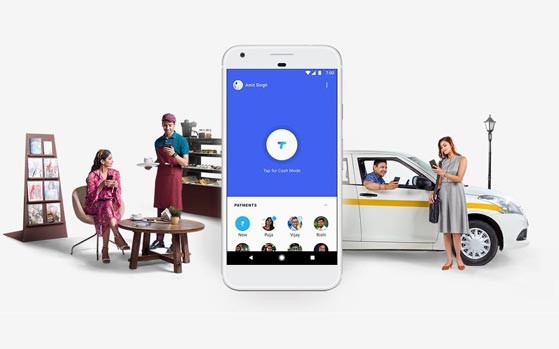Technology is moving at lightning speed, and the next generation of Western children will have no idea what it is like to grow up without the ability to constantly be “online”. But for the older generations, we remember the days of poking holes into two empty soup cans and attaching them with a string in order to talk to someone a few feet away.
We also remember the films and television shows that conceptualized really cool technology ideas that we wrote off as utter malarkey. Here are some examples of when fiction becomes reality:
Invisibility Cloak
No matter how old you were when you read Harry Potter and the Philosopher’s Stone, you wanted to get an Invisibility Cloak too. You would be able to get into places you weren’t supposed to go and overhear conversations you weren’t meant to hear – it would be the perfect tool for mischief!

It’s no longer just a pipe dream: the Tachi Laboratory at the University of Tokyo has developed Optical camouflage using a form of augmented reality, which adds computer-generated content to enhance sensory perceptions. To use this “invisibility cloak” the person who wants to be invisible must wear a special garment made of highly reflective material. A digital camera records what is the behind the subject and then reflects it into a mirror and projects it onto the front of the subject, allowing them to blend in with the background.
Cloaking created by researchers at the University of Texas at Austin, uses meta-materials to bend light around the subject and return it to its original path. The problem with this method is that it only can be seen from one angle which would be difficult to achieve in natural light. However, it brings us closer to having the real thing.
Wrap-around Transparent Monitors
Avatar was one of those amazing films you had to see in theatre. Even if you don’t like 3D films, the way the film used 3D was to add depth of field rather than to throw things at you. It was completely groundbreaking. There is a really cool scene where the camera pans through the office they’re working from and you see the team of scientists and programmers working on a giant transparent screen.

In 2009, NEC released a model of a curved screen that allowed joining the screens together for a 180-degree (or 360 if you really wanted to) experience. Unfortunately, these monitors are no longer available but similar tech is likely on the way – Plastic Logic is a company that specializes in flexible and bendable displays and Samsung TV released a television that can convert from flat to curved.
iPad/Kindle
It’s true: the concept for the iPad had long been imagined well before Steve Jobs presented the idea to the world. In fact, it was British science fiction writer Sir Arthur C. Clarke who described the concept in his 1968 novel 2001: A Space Odyssey.
He wrote:
“When he tired of official reports and memoranda and minutes, he would plug in his foolscap-size newspad into the ship’s information circuit and scan the latest reports from Earth. One by one he would conjure up the world’s major electronic papers…Switching to the display unit’s short-term memory, he would hold the front page while he quickly searched the headlines and noted the items that interested him. Each had its own two-digit reference; when he punched that, the postage-stamp-size rectangle would expand until it neatly filled the screen and he could read it with comfort. When he had finished, he would flash back to the complete page and select a new subject for detailed examination…”
He worked with Stanley Kubrick (director of A Clockwork Orange) to create the film in 1968 in which they produced the first visualization of an electronic pad that allowed users to read the newspaper and other documents. The device, pictured above, was referred to as Newspad. The Apple iPad and the new Kindle fire look an awful lot like it – coincidence?
Interactive Windshield
We saw it in Mission Impossible 4: Ghost Protocol – Tom Cruise and Paula Patton driving in the BMW i8 with futuristic user interface that allows you to get directions that are displayed directly on to your windshield. It was multi-touch and highly interactive – another example of augmented reality where a computer adds valuable information to what already exists.

Technology firm Harman released an augmented reality windscreen in 2013 at the Geneva Motor Show. The screen would provide important information to the driver in a way that is not distracting and can be moved away by swiping your hand. BMW also currently has a head-up display technology in their top-range vehicles that replaces the traditional dashboard by displaying data on the windshield. It isn’t touch screen and it doesn’t have a cool UI, but it’s color coded, interactive and it is on the windshield.
Video Conferencing
It’s impossible to write one of these blog posts without referencing the quintessential futuristic technology film: Back to the Future II. This film takes place in 2015 and in the film older Marty McFly’s boss is Japanese and he meets with him via video conference, which was apparently a very popular thing for old television shows and movies to predict. In the cartoon The Jetsons, they used a giant video-phone system called the Visaphone – though that show was set in 2062.
Skype was founded in 2003 – well ahead of 2062 and 2015 – and has become one of the most common forms of international communication.
There are actually a lot of technology predictions Back to the Future II made and got right. The only question is: where is my hover board?!
About the author
Verena blogs about gadgets and technology, covering everything from the latest mobile advancements to display technology. When she’s not online Verena enjoys swimming, cycling and travelling the world.



